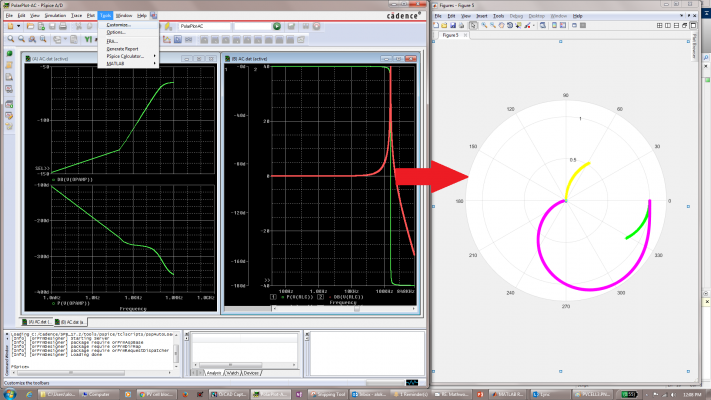Simulation tools are of great assistance to engineers and researchers and they reduce product-development cycle time, improve design quality, and simplify analysis without costly and time-consuming experiments and physical setup. Increasing design complexity, shorter design cycles, and pressure to reduce costs are taking design simulation challenges to the next level. In today’s design world, a designer cannot just rely upon the simulation and optimization of individual blocks and hope that these different blocks will work to design specifications when assembled together. The majority of system design issues are detected at the initial prototype stages and found to be at the interconnect level. A well-integrated powerful modeling and simulation environment would enable designers to identify and correct these issues at the design stage.
Any conventional electronics or electro-mechanical system can be modeled mathematically or electrically. Let’s take the example of a Hybrid Electrical Vehicle (HEV) system to understand this better. The design for such a system requires modeling and simulation capabilities for various non-electrical systems, such as engine, transmission, fuel consumption and emission control, braking, and a variety of electrical systems. The electrical systems include inverters, converters, control logic that uses semiconductor devices (such as IGBT and precision electronics components), ADC/DAC, etc.
Currently, no single tool offers the ability to model and simulate both systems together. Co-simulation between different toolsets to model these diverse sets of modules is one way forward. In this space, MATLAB offers comprehensive capabilities to model and simulate automotive and other mechanical and thermal modules mathematically, and PSpice is renowned for its electronics and power semiconductor device modeling and simulation capabilities.
The PSpice 17.2-2016 release enhances the existing PSpice-MATLAB co-simulation interface to a well-integrated, bidirectional co-simulation flow. This flow enables designers to use these two tools together in different configurations.
At the initial stages of the HEV design, the engine and other mechanical systems are designed and optimized as standalone blocks in MATLAB, and all electrical systems are designed in PSpice as standalone modules. A typical HEV electrical system consists of a battery, power converter, inverter, an electric motor, and a set of sensors, and is designed using a true electrical simulator, such as PSpice. Simulating an electrical subsystem using PSpice offers significant advantages over simulating with a mathematical computation tool. With the PSpice Designer’s exhaustive built-in device libraries, designers save significant time in modeling semiconductor devices, and simulation results are much closer to the prototype results. Additionally, the designers can optimize these electrical modules for various operating and environmental conditions to match physical systems. This electrical system and its control logic can be efficiently simulated using PSpice to optimize super capacitor size, DC/DC converter voltage range, PWM control, and the overall control logic.
Once this design cycle is complete, the traditional design flow is to take these subsystems at the prototype stage and start refining the design to resolve interconnect issues. Using this new system design flow, designers can now take a model-based design approach to the next level of virtual prototyping by interconnecting these subsystems that were developed by different teams using different tools (MATLAB and PSpice/SPICE), and simulate the full HEV together using PSpice Simulink.
The regenerative braking system is a critical block of the HEV system. To recover maximum energy, one needs to simulate bidirectional DC/DC converters over a wide range of voltage variations. Let’s look at the regenerative braking module closely to see the real advantages of co-simulation. During the regenerative braking phase of functioning and recovering energy, the electrical system is highly dependent on the vehicle’s mechanical and operating conditions, such as brake force distribution, aerodynamics resistance, rolling resistances, the slope of the road, and the vehicle speed and weight. These behaviors would have already been modeled and simulated in the mathematical world (MATLAB). Thus co-simulation of these two systems eliminates any assumption and provides a true virtual prototype environment. One can just interconnect these two without worrying about redeveloping these models using SPICE, resulting in huge savings in modeling time and in the analysis of the system as a whole.
Since co-simulation consumes respective models as-is without any translation, an additional advantage is that the designs get reused and simulations are done with updated models without requiring any additional effort.
The PSpice Systems option also enables designers to transfer PSpice analysis data into MATLAB with the click of a button to generate customize plots in MATLAB and to perform complex calculations with simulation data in PSpice environment using MATLAB functions. This solution provides three key benefits. Designers can:
- Utilize all post-process MATLAB analysis and measurement functions in a single, integrated system design and debug environment.
- Simulate the algorithmic and circuit/electrical-level blocks together reusing test benches, signal sources, and common measurements.
- Perform functional verification of full system. Using the new flow improves the designer’s productivity and the quality of simulations. Time to market gets reduced.
Consider any complex system, such as a wave energy system, grid-tie inverters (GTIs) with wind turbines, solar energy systems, or IoT-based systems—a designer must model several modules in an integrated environment for each of them. The approach described here applies to all these and similar applications.
To summarize, this new PSpice system option enables modeling and simulation of a multi-domain system into one integrated environment.
More information here: https://www.orcad.com/pspice-and-simulink-integration











